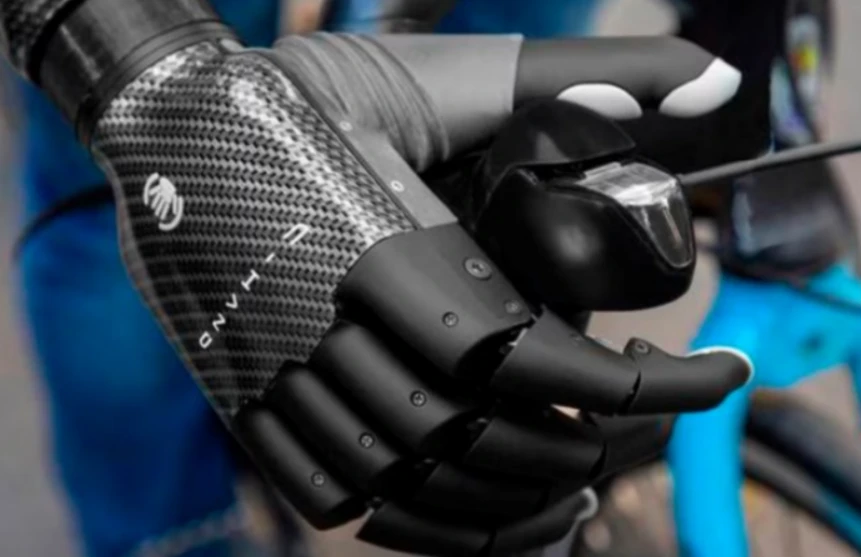The intelligent prostheses of Ukrainian soldiers left the Mexicans speechless, the development and precision of the parts became a real demonstration of the scope of nanotechnology, thanks to the work and passion of the engineer Álvaro Ríos Poveda, who literally reactivated the sensors of these military.
This is because the Ukrainian soldiers went to the Senate of the Mexican Republic with representatives of the Science and Technology Commission to receive their prostheses with nanotechnology included.
“These patients received state-of-the-art bionic systems and at that moment they are already enjoying their lives again in Ukraine,” said Ríos Poveda, CEO of Human Assistive Technologies (HAT), a Mexican technology company that works with micromechanical nanotechnology and specializes in prosthetics. for hands and legs, which since 2017 began operations in Mexico.
Publimetro spoke with Álvaro Ríos Poveda, CEO of HAT, who mentioned that “five years ago the company started with the purpose of providing state-of-the-art technologies to people who do not have access to assisted technologies, thinking that only 5% of the population that has some type of disability has access to these and we think it is a great opportunity not only for doctors, but for all of Latin America.”
In Mexico there are approximately 780,000 people with amputations according to the latest report from the National Institute of Statistics and Geography (Inegi).
The company seeks to benefit the population with research advances focused on state-of-the-art technology “we have developed a state-of-the-art bionic arm that we use for different projects worldwide,” said Ríos Poveda.
Speaking of the development of technology, the materials used to manufacture prostheses with this type of nanotechnology, Ríos Poveda commented that they have developed “different combinations of materials to make it possible for the bionic hand to have the same lower weight than the human hand, to that when patients use the bionic system it is as close as possible to a human hand.”
4 questions to…
How does this kind of bionic system work?
Although bionic systems are normally connected via electrodes, there are both non-invasive and invasive technologies. In the invasive ones, the electrodes are placed through surgery and these electrodes are directly connected to the neuromuscular terminals to receive the signal that the bionic system then interprets.
The non-invasive ones —as in the case of our bionic system—, we have developed electrodes that are placed on the skin and can be removed and put on very easily. In this way, when the signal reaches the stump, it is interpreted by artificial intelligence and achieves control of the hand.
How much does it cost to acquire a bionic prosthesis?
Normally, a bionic system with a state-of-the-art system like the one we have, a bionic hand can be around a minimum of 20,000 to 100,000 dollars. The technology of the system is superior to those that exist in the market, but with much lower costs and the mission that we have as a company so that more people can use it than the 5% that we initially spoke about.
We can talk about 30 or 40% below these prices thanks to the innovation and research that we have in Mexico so that patients receive all the pre-prosthetic treatment and complete rehabilitation.
What are the stages of care?
The patient receives a series of exercises that mainly allow him to improve in four main aspects in order to be able to use his prosthesis without problem and develop muscle strength just as he had before the amputation. The control of the prosthesis is also very important, that they can continue sending that control signal to the stump so that it can be interpreted later by the prosthesis.
Flexibility is another issue that many times due to amputation and scarring, patients lose some freedom of movement. Psychological care is also part of the process to receive a part that is external to the body that is going to be used again and through the system to improve the quality of life.
Subsequently, the patient begins to use the bionic system on a day-to-day basis and begins the stage of learning and full interaction with the bonic system.
What challenges does biotechnology face?
Biotechnology faces many challenges, the first is to match the bionic systems with the natural systems of the human body and the control of the 27 degrees of freedom in real time.
Increase our human capacities to, for example, have five fingers become six, or that a person who can have four arms or three legs. Research is already underway in this regard and HAT has allies in Japan who consider it important to see how we can not only replace lost limbs, but also how to empower ourselves as human beings.

